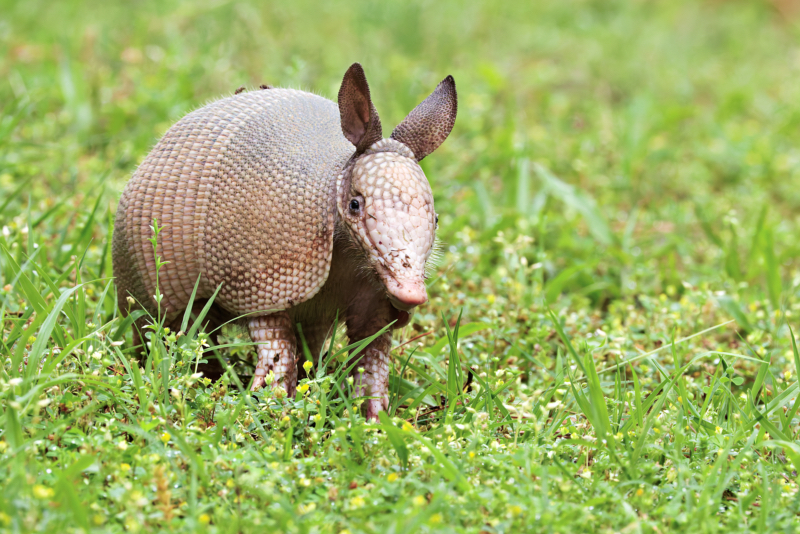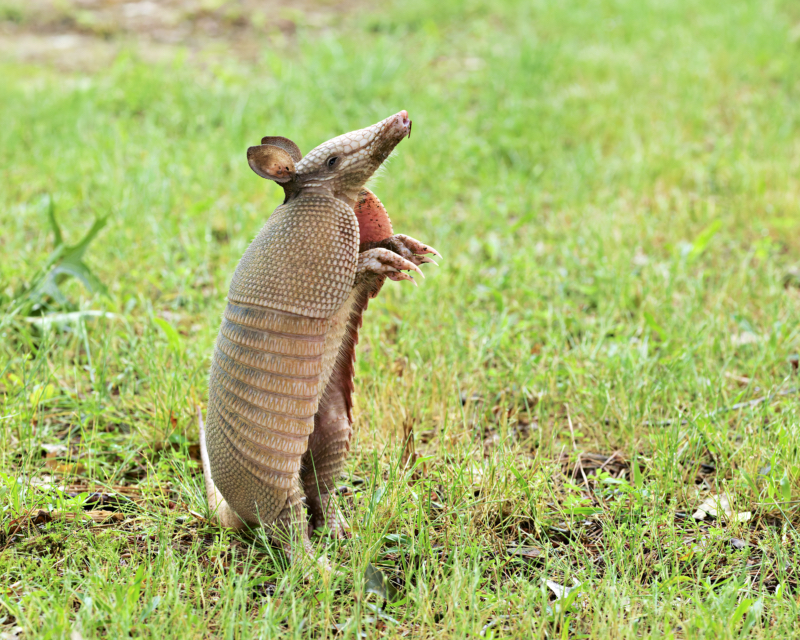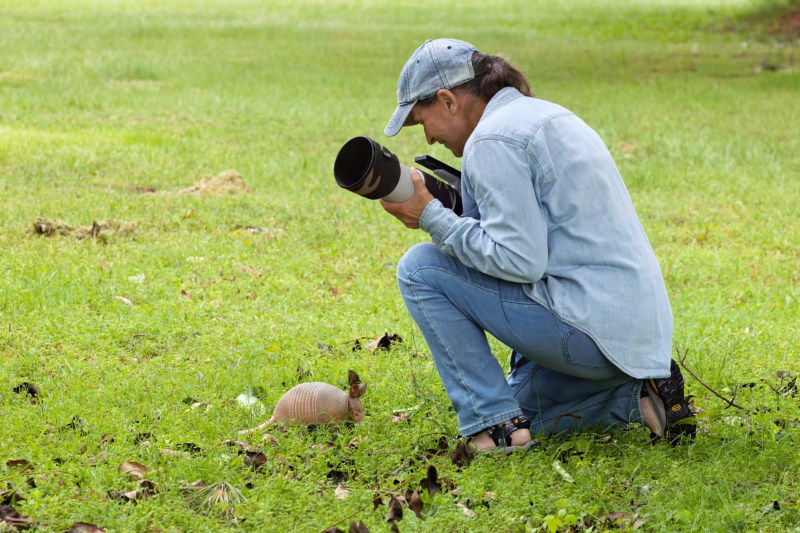Yesterday afternoon, May 24th, I stepped out onto my deck and immediately spotted four baby Nine-banded Armadillos near the steps. I rushed back inside to grab my camera and quickly returned outside to start photographing them. This was the first time I had ever seen baby armadillos, and it was quite a surprise.
Years ago, I photographed three adult armadillos together, which was rare enough to inspire a blog post of its own (Three Armadillos Together). So, seeing four baby armadillos together was truly special.

Learning About Baby Armadillos

Because I had never seen armadillo pups before, I did some research to better understand what I had witnessed. Nine-banded Armadillos (Dasypus novemcinctus) have one of the most fascinating reproductive strategies among mammals. They almost always give birth to litters of four pups that are genetically identical. These quadruplets develop from a single fertilized egg, sharing one placenta during gestation, and are always the same sex.
The pups are typically born in March in the northern hemisphere, inside a burrow. At birth, they look like miniature versions of adult armadillos but have softer, more vulnerable shells. As they mature, their armor hardens, helping protect them from predators.
Behavior and Development

Young armadillos are usually more cautious than adults. They tend to forage earlier in the day and are more alert to potential danger. After birth, they stay in the burrow for a while under their mother’s care until they’re ready to explore. That explains why I hadn’t seen these pups earlier in the spring, they were likely just beginning to venture out.
Nine-banded armadillos can produce up to 56 young over a lifetime, thanks to their unique way of reproducing. The consistent birth of identical quadruplets has helped the species rapidly expand its range, especially in the southern United States.
A Remarkable Backyard Sighting

Catching a glimpse of these four baby armadillos was one of the most memorable backyard wildlife encounters I’ve had in a long time. Not only was it a rare sighting, but it also gave me the opportunity to learn more about a species I’ve photographed before but never fully understood.
Mia’s Blog Post and Photos: Baby Nine-banded Armadillo Pups And Me

Great post, as all your posts are! Thank you!
This was amazing. I live in the Ocala National Forest, it is full of these guys. After awakening one morning to find my entire driveway full of holes, I changed my fencing to smaller openings. It took a long time for the repairs to the yard. I am glad you are enjoying them! I like the photos, especially with Mia!
Very interesting
Awesome! Rare indeed